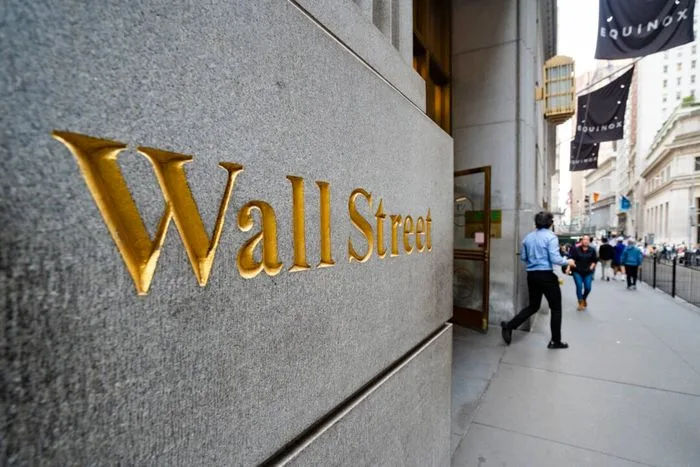
US Stocks Rally as Dow Jumps 740 Points Following Trump’s EU Tariff Delay
By Andrew Moran
Investors returned from the Memorial Day long weekend cheering President Donald Trump’s decision to postpone 50 percent tariffs on the European Union.
The blue-chip Dow Jones Industrial Average advanced 740.58 points, or 1.78 percent, to close at 42,343. The broader S&P 500 Index rose 118.72 points, or 2.05 percent. The tech-heavy Nasdaq Composite Index jumped 461.96 points, or 2.47 percent.
While the Dow and the Nasdaq remain in the red so far this year, the S&P 500 has registered gains.
In a May 23 post on Truth Social, the president stated that he would impose a 50 percent tariff on the European Union because trade negotiations were “going nowhere.” However, he confirmed on May 25 that he would delay the levy deadline for the 27-member trade bloc to July 9, following a request from European Commission President Ursula von der Leyen.
In Europe, stocks picked up modest gains. Germany’s DAX rose 0.7 percent to a record high on optimism of easing U.S.–EU trade tensions. London’s FTSE also added about 0.7 percent, while France’s CAC 40 Index edged up 0.1 percent.
Traders’ optimism intensified after National Economic Council director Kevin Hassett hinted that “a few more” trade agreements could be announced this week.
“I expect we’ll probably see a few more deals even this week. There’s some stuff very close to the finish. It’s up to the president, of course,” Hassett said in an interview with CNBC’s “Squawk Box” on May 27.
He also suggested that India is “on the list of close to the finish line.”
Bond yields, meanwhile, were mixed to kick off the holiday-shortened trading week.
The yield on the benchmark 10-year slid by 4 basis points, to 4.47 percent. Short-term yields were little changed, while the 20- and 30-year yields dipped below 5 percent.
Long-term interest rates surged in May, with the 20- and 30-year Treasury yields climbing approximately 30 basis points since the start of the month.
Financial markets are facing a series of headwinds, from a tariff-fueled economic slowdown to the potential for the Federal Reserve to pause interest rate cuts this year, says Tom Essaye, the president and co-founder of the Sevens Research Report.
“It’s possible that none of those risks derail the market or the economy, but it is probably more likely that at least one of them causes some sort of problem and last week was about investors being reminded of that reality,” Essaye said in a note emailed to The Epoch Times.
Federal Reserve and Inflation in Focus
Investors will scrutinize the minutes from this month’s Fed policy meeting, which could provide deeper insight into the thoughts of monetary officials. They will be published on May 28.
The Fed kept interest rates unchanged this month for the third consecutive month, leaving the benchmark policy rate at a range of 4.25–4.50 percent.
According to the CME FedWatch Tool, the futures market expects the next quarter-point rate cut in September as policymakers continue keeping an eye on a potential inflation resurgence.
Recent headline numbers indicate that the inflation flame has yet to be rekindled. However, according to Apollo chief economist Torsten Slok, consensus inflation expectations have been steadily rising.
“Inflation has for several years been moving down toward the Fed’s 2 percent inflation target. But the consensus now expects inflation to rise over the coming quarters, driven by tariffs and by upward pressure on housing inflation,” Slok said in a note emailed to The Epoch Times.
Kevin Hassett, director of the National Economic Council, speaks during a press briefing at the White House in Washington. Samira Bouaou/The Epoch Times
In April, the U.S. annual inflation rate slowed to 2.3 percent, the lowest in more than four years. The producer price index, a measure of potential pipeline inflation, fell by 0.5 percent last month.
This week, the Bureau of Economic Analysis will release the Fed’s preferred inflation measure. The Federal Reserve Bank of Cleveland’s Inflation Nowcasting model anticipates that Personal Consumption Expenditures (PCE) price index inflation will slow to 2.2 percent. In addition, core PCE inflation, which removes the volatile energy and food prices, will come in at 2.6 percent.
The rate-setting Federal Open Market Committee will hold its next two-day policy meeting on June 17–18.
In addition, the second estimate for the first-quarter GDP growth rate will be released on May 29. In the first three months of 2025, the U.S. economy contracted by 0.3 percent, and the consensus forecast indicates that there will be no substantial revisions to the reading.
“There will not likely be a significant change to the 1Q25 result coming in this second release,” Lauren Saidel-Baker, an economist at ITR Economics, said in a note emailed to The Epoch Times.
“We know that imports surged and that government spending was down slightly. Whether the exact contribution of consumer spending, business investment, and exports come slightly closer or farther from offsetting these factors does not change that underlying conclusion.”


